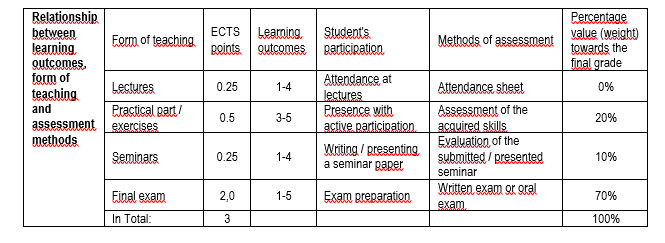The course Anatomy will be observed from a functional viewpoint with special emphasis on clinical anatomy of adults. In clinically significant fields students have to know the anatomy of children, youth and pregnant women. Students have to be qualified to find and identify anatomic structures on the thorax, abdomen and extremities they will encounter in their clinical work every day. Furthermore, they have to recognise clinically significant differences that could affect the determination of clinical diagnoses and treatment. They have to recognise the mechanics of joint movement on the extremities and understand their significance during a clinical check-up.
The course Anatomy will be observed from a functional viewpoint with special emphasis on clinical anatomy of adults. In clinically significant fields students have to know the anatomy of children, youth and pregnant women. Students have to be qualified to find and identify anatomic structures on the thorax, abdomen and extremities they will encounter in their clinical work every day. Furthermore, they have to recognise clinically significant differences that could affect the determination of clinical diagnoses and treatment. They have to recognise the mechanics of joint movement on the extremities and understand their significance during a clinical check-up.
Obavezna literatura:
- Havelka M, Havelka Meštrović A, ur. Zdravstvena psihologija: biopsihosocijalne odrednice zdravlja. Zagreb: Zdravstveno veleučilište Zagreb; 2013.
- Hudek-Knežević J, Kardum I. Psihosocijalne odrednice tjelesnog zdravlja: I. Stres i tjelesno zdravlje. Jastrebarsko: Naklada Slap; 2006.
Upon completion of this course, students will be able to:
- Acquire comprehensive knowledge about the structure and function of the vestibular system and the system for perception of space, the most common causes of disorders of these systems and their clinical manifestations.
- Assess the condition of the vestibular system and the general physical abilities of the patient.
- Plan the vestibular rehabilitation process for each patient.
- Master the most important modern diagnostic and therapeutic procedures.
- Apply practical skills in performing various diagnostic and vestibular-rehabilitation procedures.



